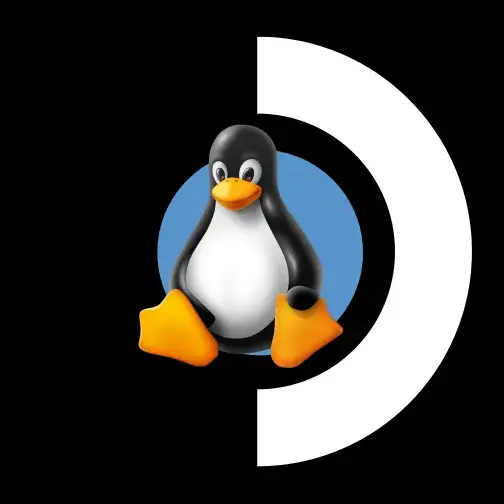

The DSP firmware the code comment mentions is probably a proprietary binary blob, right? That means it’s pretty much a blackbox and it’s not possible to fix the underlying issue, hence this workaround.


The DSP firmware the code comment mentions is probably a proprietary binary blob, right? That means it’s pretty much a blackbox and it’s not possible to fix the underlying issue, hence this workaround.


The best Windows is Wine ;)


Apple was very late to add AV1 support to their ecosystem in general. As you state, support for hardware decoding was only added with the M3/A17 Pro chips in 2023. There’s still no AV1 hardware encoder on any of Apple’s chips.
I think they were waiting on H.266 and whether it succeeds for too long, they were/are big on H.265 (and all the other HEVC-related stuff like HEIC) so that’d make sense from that perspective.


So then it’ll have native Linux Denuvo I guess…?


Denuvo is fully intact under Linux though. It’s actually even worse than under Windows or at least it used to be, because switching between different Proton versions actually counts towards the 5 machines within 24 hours limit.


With Denuvo DRM!
Honestly - lack of large trackpads aside (it does have a tiny one on the right side) - the Legion Go S looks like a good deal. Price should be equal to the OLED Deck for the 512 GB variant, for that you get a device with a more modern CPU architecture and 50% more GPU cores. The display is quite a bit larger (8.1" vs 7.4", which is a larger difference than it might seem), it’s higher resolution 120 Hz and - most importantly - it has VRR, which the Steam Deck OLED lacks. Sure, it’s not OLED and some people are seemingly allergic to higher resolution displays (“think about the battery life!!!” or “not powerful enough to play games at this res” (upscaling exists)), but 2D games like Hollow Knight or Cuphead should look amazing on this display and font rendering should be a lot better.
Also, Lenovo might sell this in countries where the Steam Deck isn’t officially available.
We played “Project Eden” on a (small) LAN yesterday. It supports up to 4 player coop, you play a group of “agents” (?) and it’s basically a third person puzzle-solving + shooting game.


I use as few Electron apps as possible. I replaced VSCode with (depending on what I’m trying to achieve) Helix, Sublime Text or a JetBrains IDE.


Or better yet: nix the Nvidia app :)


What people describe as “OLED burn-in” isn’t comparable at all to what you say “LCD burn-in” is (which doesn’t really exist in a permanent way). LCDs are way more durable than even modern OLEDs, it’s not even comparable to be honest.
That being said, it’s improved over the early days as you said and I doubt the average Steam Deck OLED will have problems over its normal lifespan. I still wouldn’t recommend OLED for heavy office use though, as you’ll be able to see degradation within months of first use.


I simply use the default iOS keyboard.


A game can both be complete and have expansions later. While it is true that many games strip what seems like core content off the main purchase to sell it separately as DLC, there are many examples of DLCs expanding upon an already finished game.


At 8 months old it should be well within warranty. Just get it fixed.
I expected something more shocking when I read “working with Russia”.
Kagi uses multiple search backends, and of course it needs to forward search terms to these backends. These backends probably can’t trace the searches back to the individual Kagi user though, but Yandex could still analyze search trends for example.
What’s worse is that - unless they use Yandex’ API for free - customers indirectly (and likely unknowingly) support a Russian company with their paid Kagi subscription.
Kagi should at the very least release a statement about this claim.


I always hear power efficiency as an argument that ARM chips are magically better at, but Ryzen AI 300 and Intel Core Ultra 200V series seem to be very competitive with Qualcomm’s offering. It’s hard to compare 1:1 as the same chip in different laptops can be configured very differently in terms of TDP and power curves and the efficiency “sweet spots” aren’t the same for all these different chips. Core Ultra 200V is also awaiting more thorough testing, but it seems to be right up there with the Snapdragon.
I honestly found the Snapdragon X very underwhelming after all that marketing of how much better it was than Apple’s M3 and Intel’s and AMD’s offerings. By the time the Snapdragon was actually available in end-user products, AMD’s and Intel’s competing generations were right around the corner and we’ve also seen a vastly improved M4 chip (although only in an iPad so far, so meh). Add to that the issues that you’ll encounter because while Windows’ x86 to ARM translation layer has certainly improved, it’s nowhere near as seamless as what Apple did.
Sorry, I don’t know of a guide for other distributions.


To me it felt like previous Windows on ARM attempts: promised a lot, released with problems (mainly compatibility this time), then quickly forgotten because x86 chips caught up anyway.
See you in 2-3 years!


While I mostly agree with your first paragraph, I don’t see Nintendo as the innocent and awesome third player. They are certainly doing well in terms of sales numbers right now, but they’ve proven time and time again that they’re hostile towards their fanbase (and I’m not talking about pirated games here).
I also don’t see how the Switch brought a “fresh, intuitive control scheme” to the table. The hybrid console concept was the first well implemented take and quite a few people certainly like that flexibility, but in my opinion the best way to play Switch is on a TV with a bunch of “Pro” controllers.
And in terms of games, I think Nintendo makes consistently good games (for the most part), but most of them are also very safe bets. You have your 2D platformer Mario games, 3D platformer Mario games, some fighting and sports Mario game spin-offs (again, nothing new), and a bunch of games set in the Zelda universe. Splatoon was something else, but we’re at Splatoon 3 by now as well. I personally thought Mario Maker was the most “revolutionary” title in somewhat recent times. I enjoyed some of these games especially for their coop (or pvp) experiences, but there wasn’t much in there that truly surprised me.
YMMV of course, I know a lot of people absolutely loved the Zelda games for the Switch for example. Nintendo games are also pretty much feature-complete out of the box, which isn’t something you can say for a lot of these live service games popping up everywhere.
I personally think indie games or games from “large-but-based” studios are more important than ever and that’s where I got the most original and memorable experiences from in recent years.
Same. It’s pretty cheap, comes with unlimited free traffic and is just simple to use. Supports many ways to access it, including BorgBackup.